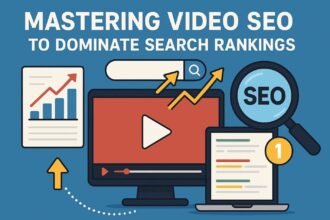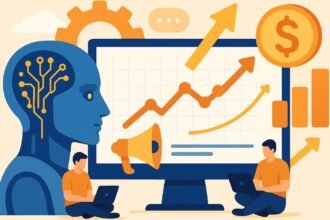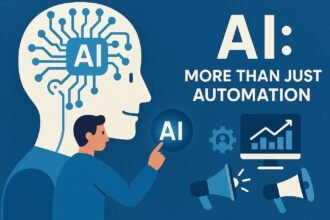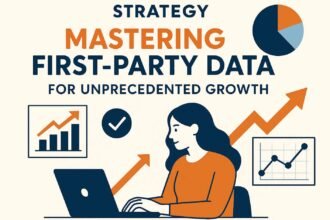Data is more than just a tool in today’s digital world; it’s what drives every campaign, decision, and strategy. Marketers use it to learn about their customers, see how well they’re doing, and show that they are making money.
But here’s the problem: the way we gather, keep, and use data is changing quickly. Having a lot of data isn’t enough anymore. What really matters now is keeping data relevant, safe, and flexible in a world that is always changing.
That’s where the idea of future-proofing comes in. It’s about making your approach to data smarter, safer, and more adaptable so that you can stay ahead of new rules, technologies, and customer needs.
The New Normal for Marketing Data
A few years ago, marketers were in a “grab everything” mode. Cookies, data from third parties, and demographics—more was better. That way of thinking doesn’t work anymore. Let’s look at the big changes:
1. The End of Cookies from Other Sites
For a long time, third-party cookies were the main way to advertise online. But since Chrome and other browsers are getting rid of them, it’s not possible to track users across the web anymore. Marketers need to find new ways to learn about their audiences that protect their privacy.
2. More Strict Privacy Laws
Laws like the GDPR in Europe and the CCPA in California have given consumers more power. Companies now need to be very clear about how they gather and use data. Not following the rules can not only get you fined, but it can also hurt your customers’ trust.
3. The Growth of First- and Zero-Party Data
- First-party data is information you get directly, like emails, purchase history, and website activity.
- Zero-party data is information that customers choose to share, such as their preferences, interests, and feedback.
Not only is this more accurate, but it is also based on trust and permission. And in today’s world, that’s worth its weight in gold.
| What kind of data | How It Is Gathered | Why It’s Important |
|---|---|---|
| Data from other people | From third-party vendors (cookies) | Value is going down; privacy is a worry. |
| Data from the first party | Interactions that are direct (CRM, sales) | Trustworthy and based on permission |
| Data from zero parties | Customer-shared (quizzes, surveys) | Most truthful and thought-provoking |
The Parts That Make Up a Data Strategy That Will Last
If you want your data strategy to work for a long time, you need to base it on a few important ideas:
1. Pay Attention to First- and Zero-Party Data
- In exchange for data, give something of value, like discounts, exclusive content, or personalized experiences.
- Use things like quizzes, polls, and calculators that let people interact.
- Create communities or loyalty programs where customers want to share information.
2. Use a CDP to Bring All of Your Data Together
A Customer Data Platform (CDP) collects all of a customer’s information in one place. Instead of having a bunch of separate silos, you get a single profile that makes personalization possible across your whole marketing stack.
3. Make Security and Governance Your Top Priority
- Stay legal by keeping up with changes in the law.
- Protect your data by using encryption and strong security protocols.
- Manage consent: Be honest and let customers decide what to share.
4. Make Sure Your Tech Stack Can Change
Don’t get stuck in one big system. Use modular tools that are connected by APIs instead. You can add new technologies this way without having to start from scratch.
Making It All Happen
Here’s how to really put future-proofing into action:
- Check what you already have – Make a list of all your data sources, look for silos, and use less data from other people.
- Map the customer journey – Find places where you can get useful information in exchange for something of value.
- Use a CDP – Make unified customer profiles that let you personalize and better attribute.
- Use a Consent Management Platform (CMP) – Build trust by letting users control their own data.
Teach Your Team
Everyone, from analysts to content creators, should know how to handle data in a way that protects privacy.
What AI Does
Artificial Intelligence and Machine Learning make your clean, organized data useful:
- Predict behavior – Find out when customers might leave or how much demand there will be for a product.
- Automate personalization – Ensure the right person gets the right content at the right time.
- Optimize campaigns – Change ads, targeting, and bids in real time.
This makes first-party and zero-party data even more useful because it fills the gap that third-party cookies leave.
Last Thoughts: A Way to Grow That Works
Making sure your marketing data will last is not a quick fix; it’s a long-term plan.
- Put trust in your customers first.
- Put money into tech that can change (like a CDP).
- Think of data as an asset that is alive and changing.
Companies that adapt to this change will not only survive the end of third-party cookies, but they will also do better with more personalized services, more loyal customers, and more sustainable growth.
In the end, protecting your data isn’t just about keeping it safe; it’s also about keeping your business safe for the future.












